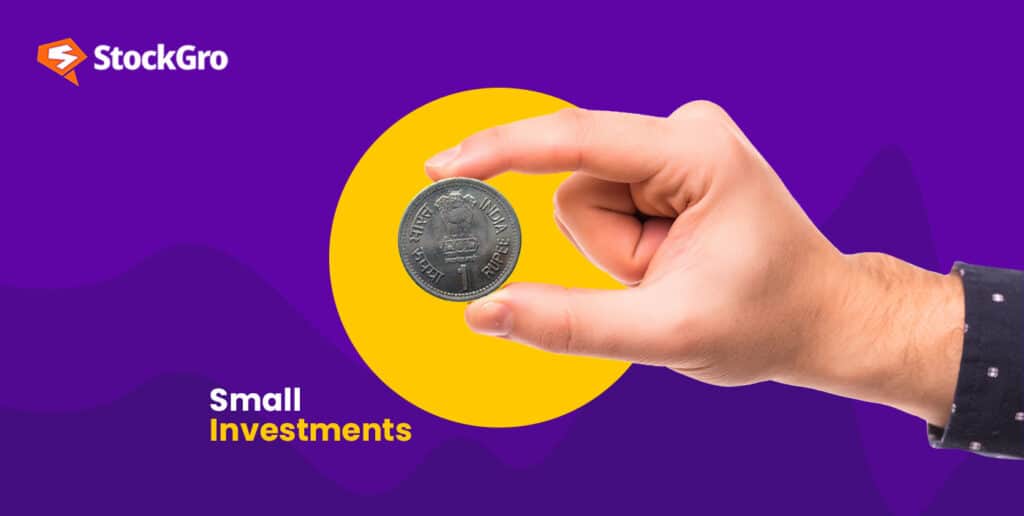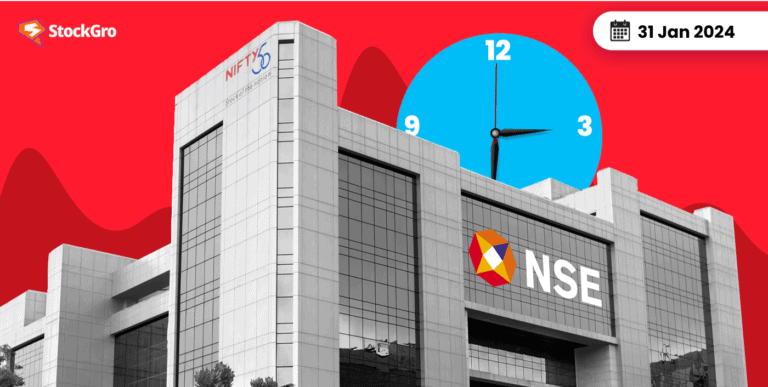
“Where do I begin with investing if I don’t have much money?” You might be asking this question, thinking you need a big amount to get into investing. Despite what many people think, you don’t need a sizable bank account to start investing. The secret to building wealth often lies not in starting big but in starting smart – and yes, that can mean starting with little capital.
Remember, the millionaires often didn’t start with a big pile of money. They got to where they are by making good investment choices, bit by bit, over time.
Investing is an important step. By starting with what you can afford and gradually increasing your investments, you can build a habit that leads to a substantial nest egg. This guide is designed to show you precisely how to do that, even if your current budget seems too small for such ambitious goals. To understand more about affordable investment tips, keep reading.
Also read: SIP investment: Your path to wealth building
How to start with a small budget
Small budget investing may seem challenging, but it’s entirely possible. Here are beginner investing strategies.
Make realistic financial goals
Setting practical financial goals is important for successful investing. It’s necessary to understand why you are putting your money into investments. Are you planning for a comfortable retirement, or are you saving up for a nearer goal, like buying a car? Your financial objectives will not only determine the types of investments you choose but also the timelines you set. By being clear and realistic about what you want to achieve and when, you can create a tailored investment strategy.
Assess your risk tolerance
Next, in micro investing for beginners evaluate how comfortable you are with risk. Your investment choices are influenced by the level of risk you are willing to take. Factors like age, financial stability, and job security play a vital role in determining this.
Decide on your investment amount
Establish your reasonable investment limit. Even a small percentage of your income, like 1%, can be a good start. Remember, it’s about starting somewhere and letting your money grow over time.
Consider your investment time horizon
How long you intend to keep your money invested until you need it back is known as your investment time horizon. This is a crucial consideration when choosing what to invest in. Longer time frames allow you to take on more risk since they give you more time to recoup from any possible losses. Conversely, if your goal is short-term, like saving for a down payment on a car in the next couple of years, you’d want to choose investments with lower risk and greater liquidity.
Overview of low-cost investment options
Here are some small-scale investment ideas to start investing with limited funds.
- Recurring Deposit (RD): An RD is a great entry-level investment opportunity if you’re not ready for market-linked risks. You can deposit a fixed amount regularly (monthly, typically) in a bank or post office. The interest rates are usually fixed and offer a safe and predictable return.
Suppose you invest ₹1,000 every month in an RD at an annual interest rate of 6.5%. After 5 years, your total investment of ₹60,000 would grow to approximately ₹70,989, offering a predictable and secure return.
- Fixed Deposit (FD): FDs are similar to RDs but involve a lump sum investment. The money is usually offered at a higher interest rate than a savings account, but it is locked in for a predetermined amount of time.
Say if you deposit ₹5,000 in an FD at an assumed interest rate of 7% per annum for 5 years, the investment would grow to about ₹6,850.
- Systematic Investment Plan (SIP): SIPs are another budget-friendly investment option that allows you to systematically put tiny sums of money into mutual funds. This methodical strategy to investing has the advantage of “rupee cost averaging,” which has the potential to gradually reduce the average cost of your investment.
For instance, you put ₹1000 per month in a mutual fund SIP that has a 12% average yearly return. After 10 years, your total investment of ₹1,20,000 could potentially grow to around ₹2,25,544, benefiting from compounding and rupee cost averaging.
- Direct equity: Investing directly in the stock market can be rewarding but requires some knowledge and a higher risk appetite. Even with small amounts, you can buy shares of companies and potentially earn returns through capital appreciation and dividends.
If you invest ₹10,000 in the stock market and assuming the stocks grow at an average rate of 15% per annum, in 5 years, your investment could be worth approximately ₹20,100, not accounting for dividends.
You may also like: How to Invest in US Stocks from India?
- Government schemes and bonds: These are low-risk investments for beginners as it is backed by the government. Examples include the National Savings Certificate (NSC) and government bonds. They offer fixed returns and are suitable for conservative investors.
Say you are Investing ₹500 in the National Pension System or NPS at an annual interest rate of 9%, and let’s assume you start at age 20 would yield around ₹23,40,660. These are secure, low-risk options with steady returns.
- Real Estate: While direct investment in property might be beyond a small budget, Real Estate Investment Trusts (REITs) allow you to invest in property markets with much smaller amounts. REITs combine the funds of numerous investors to buy properties, offering a share of the income from these assets.
Investing ₹5,000 in a REIT offering an annual return of 8% would yield a return of approximately ₹400 per year, excluding potential capital gains.
Also read: Your guide to real estate investment trusts
Bottomline
Starting your investment journey with a modest budget is not only feasible but also a wise financial decision. By understanding your financial objectives, evaluating your appetite for risk, and selecting an investment amount and time horizon, you can navigate the world of investments with confidence.
Never forget that the most important thing is to start small and keep going. As you gradually increase your investments over time, you can watch your financial portfolio grow and bring you closer to achieving your financial dreams. So take that first step, keep learning, and watch your efforts bear fruit in the journey towards financial security and independence.

